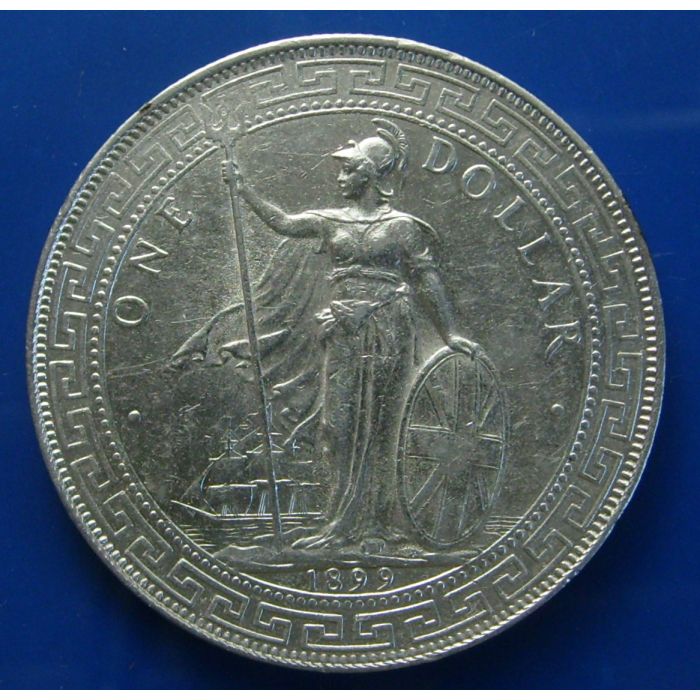Orient-British Trade Dollar1899Bkm# T5
€195.00
In stock
SKU
cnp9908
cnp9908 Orient-British Trade Dollar 1899B km# T5
| Catalog No. | km# T5 |
|---|---|
| Material | Silver |
| Send by Registered Mail | Yes |
| Value | Trade Dollar |
| Year | 1899B |
This coin was a direct result of the Opium Wars from 1839 to 1843 and 1856 to 1860 which began when China tried to stop Britain from selling opium to its citizens. As the loser, China had to open up a number of ports to British trade and residence, and cede Hong Kong to Britain. In the decades that followed, merchants and adventurers flocked to these areas, and international trade flourished. Foreign banks were established and large silver coins from all over the world began arriving to pay for tea, silk, and Chinese porcelain to be shipped abroad. The US produced their own silver trade dollars from 1873 to 1878 and in 1885, France produced silver piastres de commerce for use in their Indo-Chinese colonies. Especially after the founding of Singapore in 1819 and Hong Kong in 1842, it became necessary to produce a special coin so as to remove the reliance of a British Colony upon the various foreign coins in circulation. Bombay was the principal facility but most of these silver dollars were used by, and intended for, merchant trades to and with Hong Kong and surrounding ports in China.
These .900 fine silver trade dollars were then circulated throughout China where they were readily accepted as a medium of exchange. The coin shows Britannia standing on a shore, holding a trident in one hand and a shield in the other, with a merchant ship under full sail in the background. On the reverse is an arabesque design with the Chinese symbol for longevity in the center, and the denomination in two languages — Chinese and Malay. Curiously it carries no designation of the country of issue.
The British Trade Dollar was minted from 1895 and given legal tender status in the British colonies of Straits Settlements, Hong Kong and Labuan but it was only produced until 1935. The coins were minted in Bombay and Calcutta (and given tiny mint marks B and C). The mint mark B is in the centre prong of the trident, and the C is in the ground between Britannia's left foot and the base of the shield.
The 1921-B dollar was struck but never released for circulation, and only a limited number of 1934-B and 1935-B coins were released. It's likely that they ceased as useful money as a result of the passage in this year of the Currency Ordinance which called for the creation of Hong Kong's own money, both paper and in metal, to replace foreign monies. The 1935-B British Trade Dollar was the last of its kind, and it is likely that they were dumped into the smelting pots at the mint after the Ordinance passed, with just a few pieces held back as mementoes. (The second rarest is 1921-B). With a total mintage of well over 267,200,000 plus a handful of re-strikes, over 17,000,000 of the 26.9568 gram coins were also struck in London in 1925 and 1930. A curiosity is that certain dates are found with a new date being over-struck on another. For example, some 1894-B coins were over-struck as 1900-B ones. Chinese merchants would occasionally stamp the coins with what are called 'chopmarks' or 'countermarks' to indicate their assurance that the coin was genuine and also perhaps to advertise their businesses
The circulation of the coin in the Straits Settlements (Singapore, Malacca and Penang) was for an even shorter period. In 1903 the Straits Settlements introduced their own special dollar coin and the British dollar was gradually withdrawn from circulation.
The British Trade Dollar was finally demonetized on August 1, 1937 and many have ended up incorporated into Chinese jewellery.

